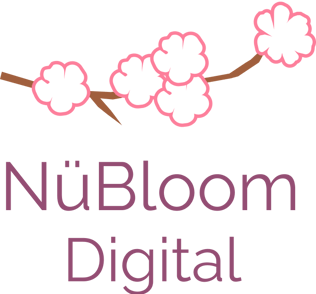Let Me De-influence You
So let me de-influence you. You don’t need the virality of influencer marketing. If you’re looking into influencer marketing and you’re considering it, I’m guessing you’re looking for social proof. I’m guessing you’re looking for user-generated content and warm reviews. I’m guessing you’re looking for people to love your products just as much as you do. Trust me, you don’t need views and clicks and likes. You want to bring about personality, flare and creativity to your business marketing. You want to bring about something that people are going to not just talk about, but recommend, give glowing reviews and share it with people who are going to love what you do.
Maya Xian
5/1/20243 min read


As one of the last of the millennials, we grew up using the internet. We grew as the internet was still finding its feet in terms of social media. We started with msn, bebo, actually a lot of us learnt to code using Piczo and then we moved more towards Tumblr, vine, twitter and then Instagram, Facebook and Snapchat. YouTube had been around for longer than we were introduced to the internet. Along this evolution of social media, social media marketing and influencers and bloggers are nothing new, though still finding their feet in a digital age. The rise of the influencer phenomenon started around 2009 just when YouTube saw creators becoming industry leaders and Mommy bloggers becoming marketing powerhouses.
Let businesses drive organic traffic, grow to corners of new audiences you thought unreachable and connect with potential customers
The reason for businesses choosing to use influencers and influencer style marketing has always been the same. Let businesses drive organic traffic, grow to corners of new audiences you thought unreachable and connect with potential customers. Of course, we’ve seen marketing blunders with influencer style marketing and there are countless celebrities who exemplify these mistakes.
It is so easy to tap into the optics of influencer marketing, from face value, the more followers an influencer has, the more reach they’ll help you get. The more likes or views someone has, the more they’ll like your product. A common mistake with influencer marketing is that it’s not always what it seems, at face value it must look like their content is doing really well and that they know and understand how to connect with their audiences. Buying likes, views and followers has been around since the Twitter days. I know personally of a few entrepreneur-style businessmen who have bought connections and followers on LinkedIn to make their profile look more credible and I’ve seen intelligent and well-educated people be impressed by the number of connections and immediately have buy-in to using their services. Instagram and Facebook are no different. The day you open up a business and promote yourself on social media, there’s a high probability that you’re going to receive unsolicited DMs asking if you’d like to use their services to increase your followers.
So let me de-influence you. You don’t need the virality of influencer marketing. If you’re looking into influencer marketing and you’re considering it, I’m guessing you’re looking for social proof. I’m guessing you’re looking for user-generated content and warm reviews. I’m guessing you’re looking for people to love your products just as much as you do. Trust me, you don’t need views and clicks and likes. You want to bring about personality, flare and creativity to your business marketing. You want to bring about something that people are going to not just talk about, but recommend, give glowing reviews and share it with people who are going to love what you do.
If your content isn’t hitting a sweet spot with the authenticity to your brand and your organic audiences. With 20,000 views and you might only receive 1 lead conversion.
I don’t want to disparage business owners from using influencers however, let me de-influence you about the way we think about influencers. Part of what makes an influencers content viral or relatable is how they feel about the sponsor, and do they actually feel elated by the collaboration? Sure, it might feel good to share your content with 20,000 people but imagine you’re a boutique selling high-end and limited edition jewellery. You find an influencer with over 400,000 followers, known for their fashion content such as high-end brands, and exclusive events. At face value, they're actually perfect for your business. But as you dig deeper, you realise that a large portion of their audience is more focused on sportswear and luxury gym wear brands rather than accessories and jewellery. Many of their followers are into fast fashion, and a significant chunk is from regions where your jewellery brand doesn’t ship to due to being able to find brands much more appropriate to them. There’s also a group of casual viewers who like the influencer’s aesthetic but aren’t true jewellery enthusiasts and so will go for the easier and cheaper products on the market. While it’s still exposure, the engagement you were hoping for with a jewellery-obsessed crowd just isn’t there. It’s not a disaster, but it’s not the direct hit you expected either.
Part of the burnout with influencers is that they get in creative blocks when creating content after content. It can be difficult to keep producing content when it doesn’t feel genuine to them and that these creators wouldn’t naturally buy into the products that they’re pushing. Using creators and influencers can be an amazing tool to promote your business but one that can require strategic planning and careful curation in campaigns that make sense.
